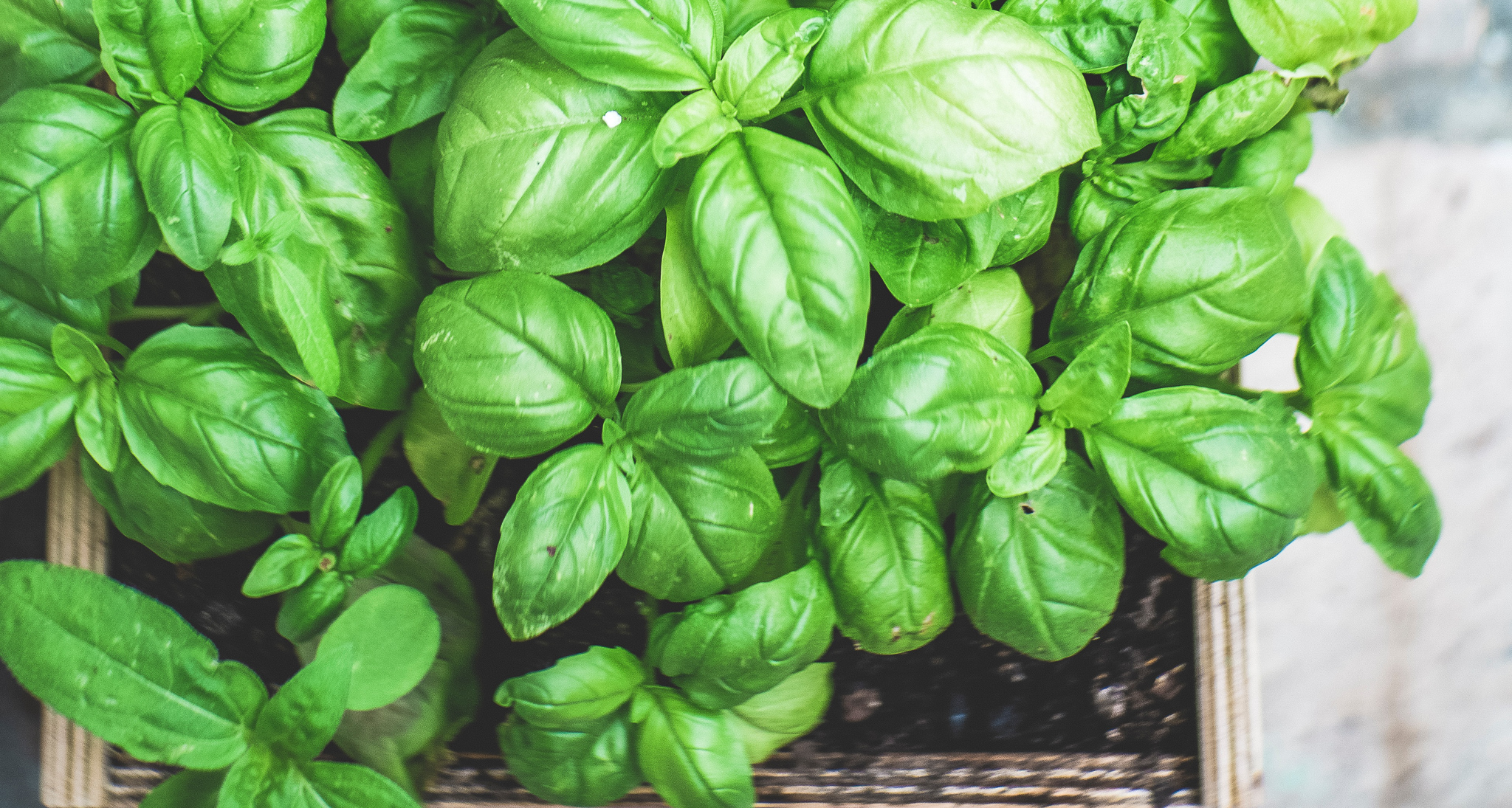Herbs present a tantalizing proposition for any gardener with an interest in cooking and saving money. In fact, the wide variety of herbs available means you can (almost) certainly grow them with a ton of success regardless of your local conditions and space restrictions.
Herb gardens provide you with continuous harvests, they’re often beneficial to other vegetables in your garden, and fresh herbs are ludicrously expensive to buy at the supermarket. Yay for efficient food production!
What’s not to love?
Select Your Herbs for the Garden
By all means, try out as many plants and seed varieties as you’re interested in! But as with vegetables, it pays off to group your herb garden into strategic combinations. Take a few minutes to compile a list of herbs that share broadly similar watering and sunlight requirements and you’ll be setting yourself up for greater success down the road.
Some herbs like rosemary and mint can be hard to establish and then hard to control, so plant those separately too.
For an example of how to create a grouping, I’m currently planning out a new raised bed for my front yard to grow parsley, basil, oregano, cilantro, tarragon, and dill. Plus a couple hot peppers that will benefit from proximity to the basil and because companion planting is super fun!
I selected these plants because they can all tolerate similar soil and watering levels with a little upfront layout planning. This combination gives me the flexibility I need to place one end of the planting box in an area of partial shade - great for the basil and cilantro - and another in full sun - great for the peppers.
You’ll notice my list doesn’t include some beautiful herb options like thyme, sage, and rosemary. They prefer drier conditions and will do better in a garden area tailored to their preferences.
Have fun with this step and don’t worry too much about constructing the perfect combination. Analysis paralysis is a real problem in gardening so just get those seeds in some dirt!
Plant Seeds Indoors or Directly in Ground
Your current season, area in the world, soil condition, and many other factors all play a part in how to best start your seeds.
A good default strategy is to start plants (herbs or otherwise) from seed in trays indoors, even for plants that are more difficult to germinate. I’m a big believer that the cost-savings and the experience gained from caring for a plant from day one are worth the tradeoffs vs. buying plants from a nursery to transplant. So with only one exception, I’m starting my full list of herb seeds in trays placed indoors until they’re ready to harden-off outside.
The exception on my list is cilantro, which generally doesn’t tolerate transplanting all that well. I know from experience that it will produce better if directly sown in the bed, but you’ll want to quickly check your selections for any herbs that should skip the seed tray step.
Find a Spot for Your Herb Garden
Many gardeners strategically plant their herbs within convenient distance to the kitchen for easy harvesting. Which is why you may hear the term “Kitchen Herb Garden” thrown around.
If you live on a standard urban or suburban lot, you can pretty safely ignore that strategy. For most of us, 30 seconds of extra walking is worth it to plant in the best spot for an abundant harvest!
Similarly, there’s no one-size-fits-all advice to place your herbs in full sun or partial shade. Make that decision based on when you plant and the corresponding hours of sunlight in a day. Early fall may call for the sunniest spot you can find just as herbs planted in early summer in hot climates will require some shade relief.
So, instead of giving you bad blanket advice, here are two options to try out:
- Plant in a container (or multiple smaller ones) that you can move a little depending on how your plants are doing. Watch for wilting or early bolting as a sign of too much sun and slow growth as a sign of too little.
- Plant in a full sun location and erect a simple shade cloth canopy as needed.
After a season of growing, you’ll be better able to correctly match the location to the herb.
Space and Plant Your Herbs
If you remember only one tip from this article, let it be this: Do not put too much space between your plants! Seed packets often recommend as much as twice the spacing actually required for a healthy bed of herbs (more accurately, it’s easy to misinterpret the space requirement on the back of the packet).
A densely-planted bed has three benefits over a sparsely-planted one:
- More total plants for larger harvests
- Space to plant a larger variety of plants
- Less bare dirt for weeds to occupy
Plant taller herbs like dill on the north and east side of your patch to prevent them from over-shading the shorter ones. Unless you suspect those shorter plants are going to need the extra shade, in which case do just the opposite! Planting intentionally in the under canopy of your bed can be an effective alternative to shade cloth.
Contain Mint
While mint is a bit difficult to germinate and establish, it can also become hugely invasive once it gets going!
Luckily, there’s an easy fix to that problem: plant your mint inside a cheap container and then bury that whole container in your herb garden. That way, the mint is safely housed with the rest of your herbs and its container won’t be an eyesore.
Lay Compost and Mulch Over Herb Bed
A layer of compost over your soil and a layer of natural mulch over the compost provides herbs with nutrients, helps retain moisture in the soil, reduces the number of weeds, and will even break down over time to create richer soil next season.
